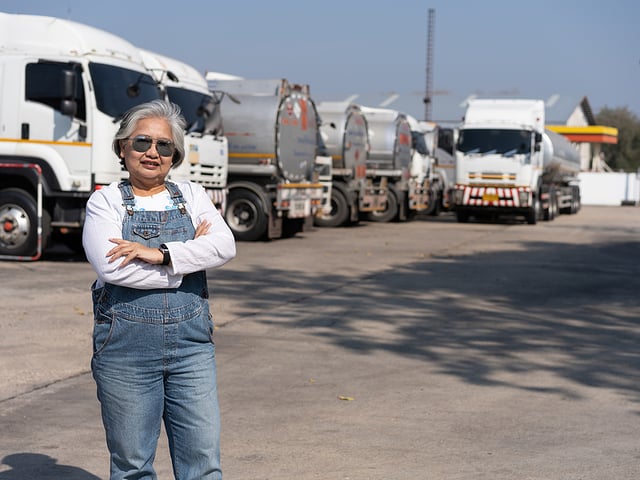
Trucking: 10% Out of Route and Other Driving Considerations
Start With The GPS
GPS picks the fastest route for cars—not necessarily the fastest route for trucks. Also, GPS can’t predict bad weather, so professional drivers need to use their own judgment and consider all factors.
Note: It is generally faster to drive cross-country through Texas and the Midwest than to drive through the western or the eastern parts of the country. Flatter states, straighter roads, and higher speed limits make for faster and easier drives.
Note: For information on route planning, please read the blog,
CDL Trip Plan: How to Prepare for the Journey
10% Out of Route
Most trucking companies will allow you to drive 10% “out of route” (driving a few more miles than the suggested route). This is to accommodate a driver’s personal preference in picking a route. Often, the driver has better information about local conditions—information that makes a “suggested route” less desirable.
Other trucking companies assign you a route and pick your fuel stops. This gives management better control over fleet operations, but discounts input from the driver.
Weather
Years ago, I was in Chicago with a load headed to Los Angeles. The company provided a “suggested route” (the shortest route) that went through Denver. Driving through Denver meant crossing The Great Divide over The Eisenhower Grade (Just west of The Eisenhower Tunnel) at 11,158 ft. The southern route goes through Albuquerque. Driving through Albuquerque meant crossing The Great Divide just west of Flagstaff at 7,320 ft.
It was January. There were predictions of snow in Colorado and Arizona.
The southern route has 3,838 feet less altitude and is 300± miles further south. The southern route is 110 miles longer (5-1/2% out of route). (2,027 miles versus 2,137 miles.) At 50–60 miles per hour (easy to do on the southern route), this was an extra 2 hours of driving. However, driving through Colorado snow would have caused more than a 2-hour delay. I made a decision and went to the southern route.
While I was motoring across New Mexico and Arizona at 65 miles per hour (wet pavement—with light, drifting snow)—the Eisenhower Grade was limited to 30 miles per hour (ice and packed snow—with heavy snowfall and subject to chain restrictions).
Consider all factors. The shortest route isn’t always the best route.
When It Is Unsafe To Drive
I cannot tell you how many times I have sent the following message to dispatch:
“Unsafe to continue. Parking. Will be late to consignee”
If it is unsafe—stop.
Drivers will encounter snow and wind and rain. It is something that you will have to work through—but at some point, it gets to be too risky. An experienced driver knows when to stop. A new driver might be a little unsure about when to stop. A clear indication that things are unsafe—you are the only truck on the road, and every rest area is full of parked trucks.
In the morning—the sun will be up, the storm will be over, daylight will melt the snow, and you will be rested.
The consignee would rather have their cargo late, than in a ditch. If you crash the truck, that is a black mark against you.
Dispatch might be unhappy. The Consignee might be upset. It is very unlikely that they would fire you—but they might. However—do you really want to drive for a company that puts the speed of their cargo over the safety of their drivers?
Remember the last line of another of these blogs,
Trucking Company Bait and Switch
“As long as you don’t crash the truck, there is always another driving company.”
Keep Reading

Commercial Driver's License Test Blog
How Many Questions are on the CDL Permit Test?
Embarking on a career in commercial truck driving begins with a crucial…

Commercial Driver's License Test Blog
What are the Three Tests for the CDL Permit?
If you’re looking to embark on a career in truck driving, obtaining a C…

Commercial Driver's License Test Blog
How Much Does It Cost to Get a CDL?
The trucking industry dominates freight shipping. Trucks handle over 70…